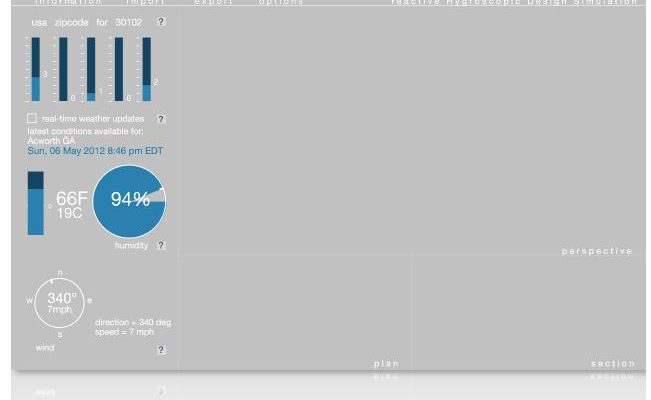Goals
rHDS (Reactive Hygroscopic Design Simulation) is an experimental and theoretical design and simulation digital apparatus for the design of rough building massing form in context with climatic variables such as wind direction and speed, and water vapor from real world climate data. The system will develop a reactive environment for conceptual design and massing of building form for developable hygroscopic surfaces elements that can enhance water vapor absorption from humid outside air. rHDS is inspired by the potential application of a theoretical building envelope that enables innovative energy and water production by drawing water vapor out of the air to deliver new sources of water and lower
indoor humidity below the outside air in hot and humid climates.
Methods
A design methodology that focuses on experimentation, exploration, discovery, simulation, feedback and generation of digital craft using real world environmental data to manifest design intent. rHDS will be a do-it-yourself innovation and invention that is closely related to the study of biomimetic design that is prevalent in nature but adapted to digital design, simulation, reaction, and feedback for the generation of useable real world results.
Anticipated Outcome
rHDS will be presented as a theoretical first approach process for designing a hygroscopic building massing form in hot and humid climates. The results will be intended to be useful in conjunction with parallel space planning and detailed project design development.

